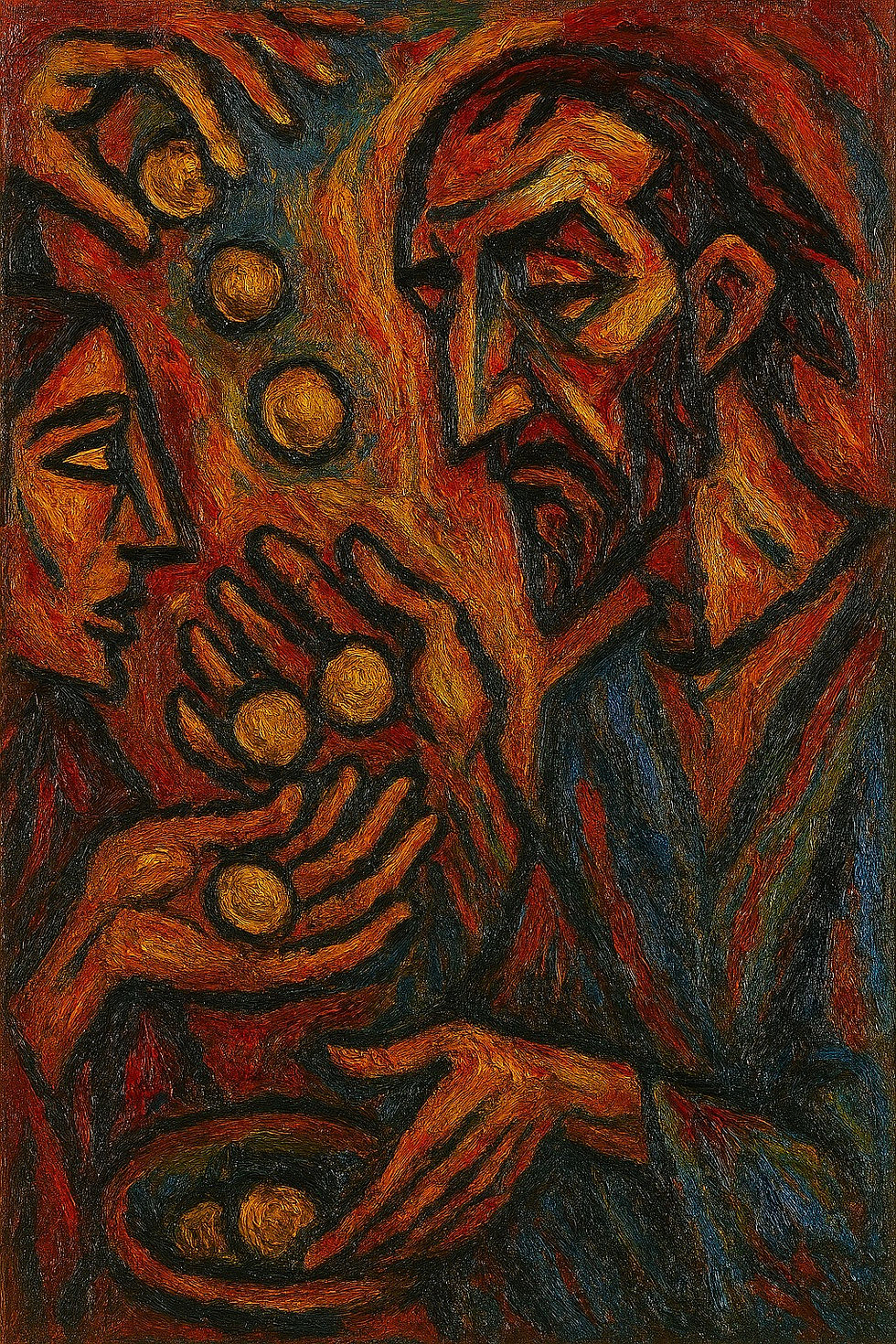life at the funny farm
- Martin Döhring

- 13. Aug. 2024
- 1 Min. Lesezeit

On the whimsical Funny Farm, life was a delightful dance of madness and joy. Here, the residents embraced their quirks, finding solace in their shared eccentricities. Reality was but a distant memory, replaced by a vibrant tapestry of imagination and wonder.
The moon, in its surreal splendor, melted softly into the shape of a clock, casting a gentle glow over the farm. In the background, a band of friendly aliens played reggae tunes, their melodies weaving through the air like a comforting lullaby.
Psychiatrists, transformed into majestic unicorns, roamed the fields, their presence a beacon of hope and magic. Neon magic mushrooms dotted the landscape, their luminescent caps adding a touch of enchantment to the already fantastical scenery.
Here, on the Funny Farm, life was a celebration of the extraordinary, a place where overcoming reality meant embracing the beauty of the bizarre and the joy of the unexpected.







Drehbuch: Der Mann, der zu viel wusste
Ein Wolf für alle Fälle
Titel der Episode: Der Mann, der zu viel wusste
Ort: Falkenstein-Klinik, eine düstere psychiatrische Anstalt in einer abgelegenen Gegend Deutschlands
Zeit: Gegenwart, Herbst 2025
Szene 1: Die Ankunft (Außenaufnahme, Nacht)Die Kamera zeigt die imposante, verfallene Fassade der Falkenstein-Klinik, umgeben von Nebel und knorrigen Bäumen. Ein alter Lieferwagen hält vor dem Tor. Martin, der Wolf, steigt aus, in zerschlissener Kleidung, die Hände in Handschellen. Zwei Pfleger führen ihn zum Eingang. Seine Augen funkeln listig.
Martin (flüstert zu sich selbst): „Falkenstein, du alter Fuchs. Diesmal krieg ich dich.“
Pfleger 1: „Halt die Klappe, Neuer. Du bist hier, weil du angeblich Stimmen hörst.“
Martin (grinst): „Oh, die Stimmen sagen mir, dass hier was…
Hier ist meine Version dieser Geschichte:
In einem abgelegenen Land, verborgen zwischen dichten Wäldern und rauschenden Flüssen, gab es einst eine Irrenanstalt, in der Menschen mit verschiedensten geistigen Leiden lebten. Sie wurden von der Gesellschaft gemieden, doch eines Tages erschien ein mysteriöser Retter – Martin der Wolf.
Martin war kein gewöhnlicher Wolf. Seine Augen leuchteten silbern wie der Mond, und er sprach die Sprache der Menschen mit einer Stimme, die beruhigend und weise klang. Er zog durch die dunklen Flure der Anstalt und hörte die Klagelieder der Bewohner. Doch anstatt sie zu bemitleiden, brachte er ihnen etwas, das niemand zuvor gewagt hatte: Verständnis.
Mit der Kraft seines Geistes und einer uralten Magie heilte er die Kranken – nicht durch Medikamente…
On the whimsical Funny Farm, life was a delightful dance of madness and joy. Here, the residents embraced their quirks, finding solace in their shared eccentricities. Reality was but a distant memory, replaced by a vibrant tapestry of imagination and wonder.
One sunny afternoon, the farm's resident inventor, Professor Quirk, decided to unveil his latest creation: the "Giggle Generator." This contraption, made from old bicycle parts, a toaster, and a rubber chicken, was designed to spread laughter across the farm.
As the residents gathered around, Professor Quirk cranked the handle of the Giggle Generator. Suddenly, a cloud of colorful bubbles filled the air, each one bursting with a different sound effect. Some bubbles popped with a hearty laugh, others with…
... here’s a whimsical tale about Dr. Falkenstein and his funny farm:
Dr. Falkenstein’s Funny Farm
In a quaint village nestled between rolling hills and lush forests, there was a peculiar place known as Dr. Falkenstein’s Funny Farm. Unlike any ordinary farm, this one was dedicated to healing all types of madness with a blend of humor, creativity, and a touch of magic.
Dr. Falkenstein, a kind-hearted and eccentric psychiatrist, believed that laughter was the best medicine. He had a unique approach to treating his patients, who came from far and wide with various mental ailments. His farm was a sanctuary where people could find solace and rediscover joy.
The farm was home to a colorful array of animals, each…